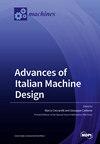利用基于费尔马特模糊环境中多姆比算子的综合决策模型为可持续制造业选择 3D 打印机
IF 2.1
3区 工程技术
Q3 ENGINEERING, ELECTRICAL & ELECTRONIC
引用次数: 0
摘要
三维打印机(3DP)作为增材制造(AM)的重要组成部分,是最先进的技术,可帮助从业人员实现生产流程的数字化转型。三维打印机的性能主要取决于与人工智能(AI)的良好结合,这样才能在使用配备人工智能技术的 3DP 完成复杂任务时胜过人类,特别是在生产无光滑表面和标准几何形状的物体时。因此,3DP 也为改进制造过程中的工程应用提供了机会。因此,AM 可以创建更可持续的生产系统,保护环境,降低工业生产活动产生的外部成本。然而,从业人员并没有足够的意愿,因为生产流程中的这种转变是一个关键且不可更改的决定,需要丰富的知识和经验。因此,提出一个方法框架和路线图可能有助于决策者承担更多责任,加快生产流程的数字化转型。本研究旨在填补文献在理论和管理方面的重要空白。因此,它为解决工业 3DP 选择问题提出了一个强大而高效的决策模型。所建议的混合 FF 模型结合了费马泰模糊逐步权重评估比率分析法(FF-SWARA)和费马泰通过将标准子区间功能映射到单区间的替代品排序法(FF-RAFSI)。在两个相关案例研究的帮助下,新颖的 FF 框架被用于解决汽车制造业中遇到的一个关键问题。此外,在费马泰模糊集的帮助下,使用基于德尔菲扩展形式的群体决策方法,对标准的影响程度进行了识别和分类。根据分析结论,"准确性 "和 "质量 "标准是最有效的衡量标准。此外,通过执行稳健性和验证检查,对建议的混合模型及其结果进行了测试。分析结果证明,建议的综合框架是一个稳健实用的决策工具。本文章由计算机程序翻译,如有差异,请以英文原文为准。
3D Printer Selection for the Sustainable Manufacturing Industry Using an Integrated Decision-Making Model Based on Dombi Operators in the Fermatean Fuzzy Environment
Three-dimensional printers (3DPs), as critical parts of additive manufacturing (AM), are state-of-the-art technologies that can help practitioners with digital transformation in production processes. Three-dimensional printer performance mostly depends on good integration with artificial intelligence (AI) to outperform humans in overcoming complex tasks using 3DPs equipped with AI technology, particularly in producing an object with no smooth surface and a standard geometric shape. Hence, 3DPs also provide an opportunity to improve engineering applications in manufacturing processes. As a result, AM can create more sustainable production systems, protect the environment, and reduce external costs arising from industries’ production activities. Nonetheless, practitioners do not have sufficient willingness since this kind of transformation in production processes is a crucial and irrevocable decision requiring vast knowledge and experience. Thus, presenting a methodological frame and a roadmap may help decision-makers take more responsibility for accelerating the digital transformation of production processes. The current study aims to fill the literature’s critical theoretical and managerial gaps. Therefore, it suggests a powerful and efficient decision model for solving 3DP selection problems for industries. The suggested hybrid FF model combines the Fermatean Fuzzy Stepwise Weight Assessment Ratio Analysis (FF–SWARA) and the Fermatean Ranking of Alternatives through Functional mapping of criterion sub-intervals into a Single Interval (FF–RAFSI) approaches. The novel FF framework is employed to solve a critical problem encountered in the automobile manufacturing industry with the help of two related case studies. In addition, the criteria are identified and categorized regarding their influence degrees using a group decision approach based on an extended form of the Delphi with the aid of the Fermatean fuzzy sets. According to the conclusions of the analysis, the criteria “Accuracy” and “Quality” are the most effective measures. Also, the suggested hybrid model and its outcomes were tested by executing robustness and validation checks. The results of the analyses prove that the suggested integrated framework is a robust and practical decision-making tool.
求助全文
通过发布文献求助,成功后即可免费获取论文全文。
去求助
来源期刊

Machines
Multiple-
CiteScore
3.00
自引率
26.90%
发文量
1012
审稿时长
11 weeks
期刊介绍:
Machines (ISSN 2075-1702) is an international, peer-reviewed journal on machinery and engineering. It publishes research articles, reviews, short communications and letters. Our aim is to encourage scientists to publish their experimental and theoretical results in as much detail as possible. There is no restriction on the length of the papers. Full experimental and/or methodical details must be provided. There are, in addition, unique features of this journal: *manuscripts regarding research proposals and research ideas will be particularly welcomed *electronic files or software regarding the full details of the calculation and experimental procedure - if unable to be published in a normal way - can be deposited as supplementary material Subject Areas: applications of automation, systems and control engineering, electronic engineering, mechanical engineering, computer engineering, mechatronics, robotics, industrial design, human-machine-interfaces, mechanical systems, machines and related components, machine vision, history of technology and industrial revolution, turbo machinery, machine diagnostics and prognostics (condition monitoring), machine design.
 求助内容:
求助内容: 应助结果提醒方式:
应助结果提醒方式:


